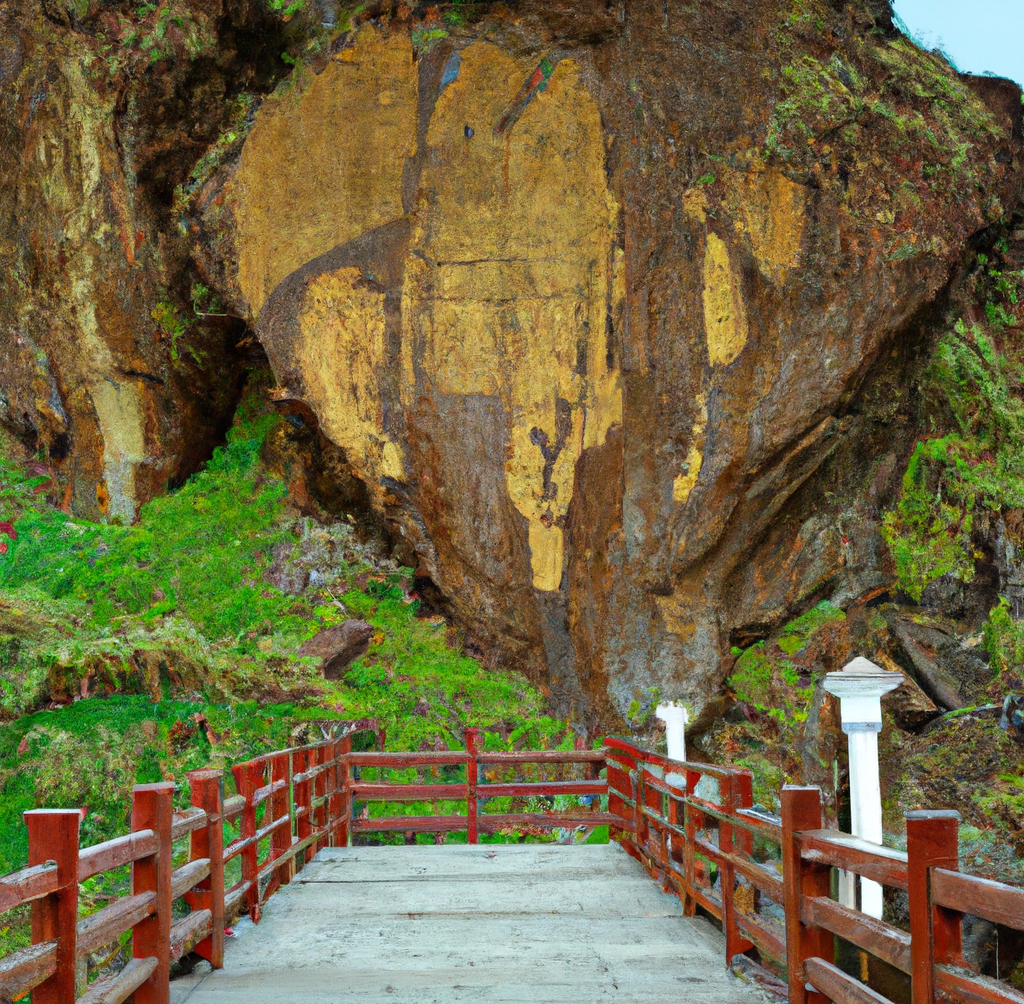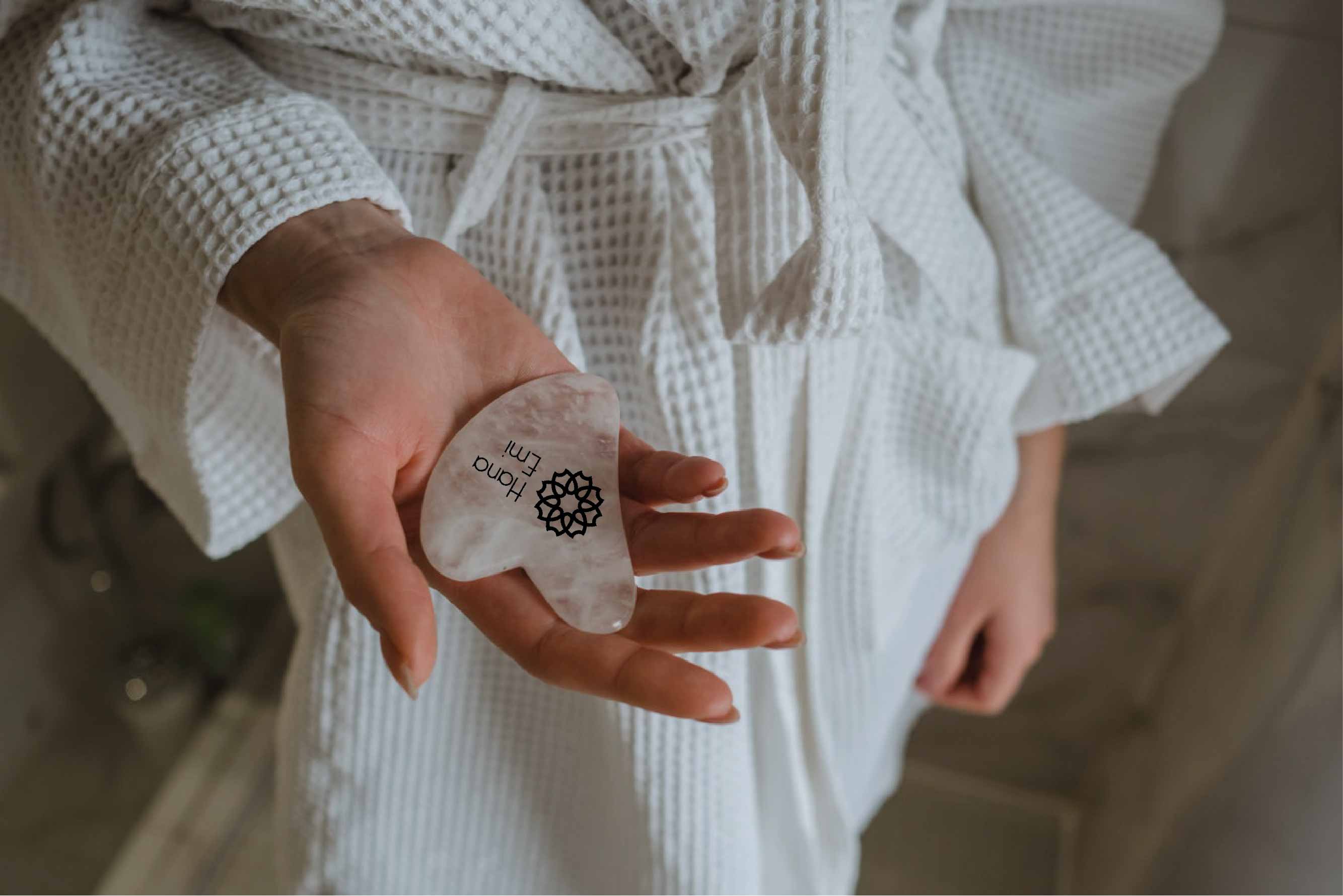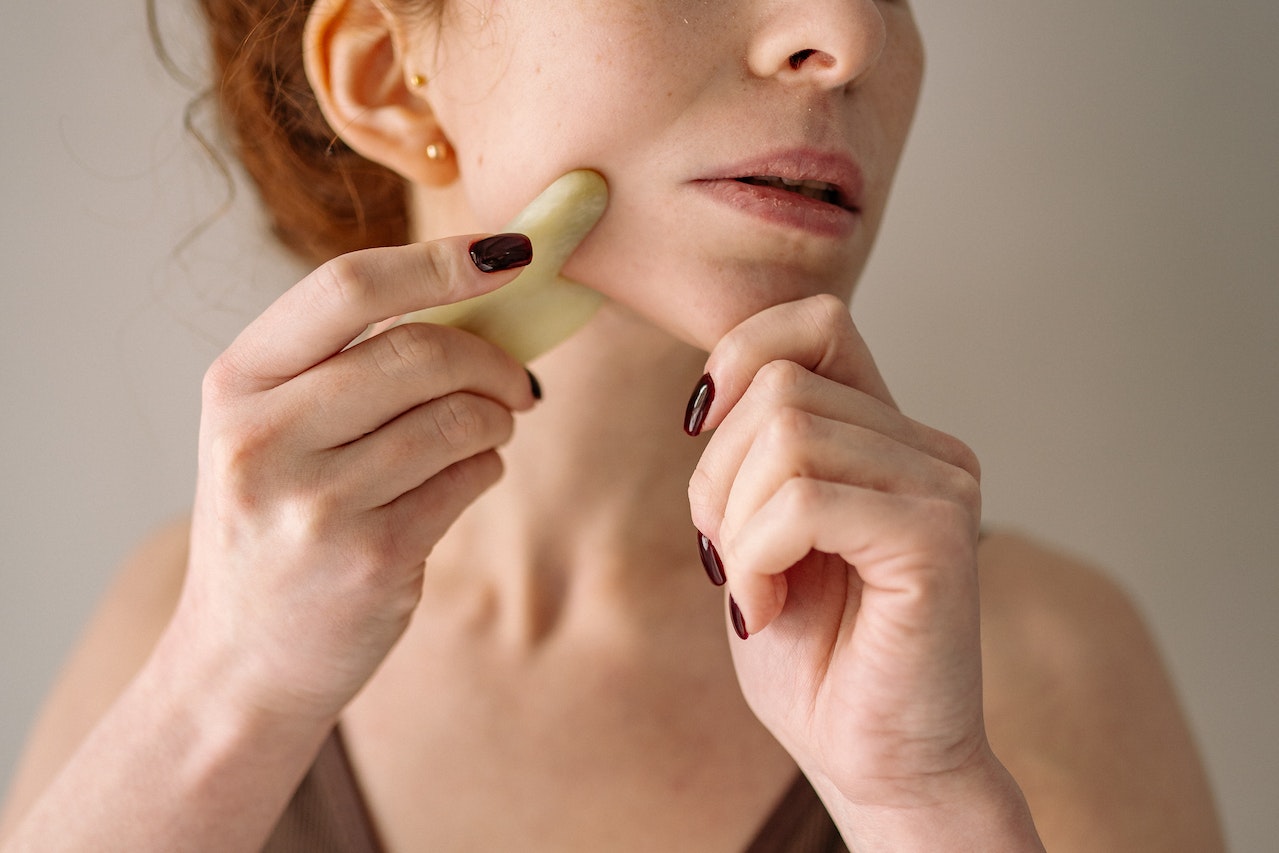A brief history of Gua Sha

Gua Sha is the Chinese term for a physical therapy technique which is equally a folk remedy and a serious practice throughout Far-East Asia. In free translation, Gua (刮) (“gwa”), means “to scrape”, “scratch” "rub" or “extract”, while Sha (痧) (“shaw) means sand or sediment, signifying the congestion. The purpose of the technique is to bring the toxins to the surface as the result of rubbing. This process brings the “sha” to the surface under the form of small grain that will redden the skin. From this perspective, Gua Sha might be considered similar to cupping, however, it offers a wider range of benefits and the rubbing covers a wider area. In Vietnamese, this technique is called “Cao Gio”.
Using a traditional specialized tool such as the Hana Emi Bian Stone Gua Sha tool, you will gently scrape or rub the skin over a problem area as a deep massage, using a downward direction. You will experience immediate relief from pain, stiffness, fever, chills, coughs, nausea, and so on. Gua Sha is valuable in the prevention and treatment of acute infectious illness, upper respiratory and digestive problems, and many other acute or chronic disorders. Gua Sha can also be used for beauty purposes such as firming up the facial muscles, smoothening the facial skin, reducing wrinkles, removing spots - improving complexion, clearing clogged pores, and clearing up acne.
Chi or Qi (pronounced “chee”) is the constant and vigorous movement of energy or life force that keeps us healthy and alive. Balancing the Chi, in Traditional Chinese Medicine, promotes blood circulation and the removal of toxic heat, stagnant blood and lymph fluid from the body.
Gua sha is applied primarily on the back, neck, shoulders, buttocks and limbs of the body. Advanced practitioners may also raise sha on the chest and abdomen. To apply gua sha, first lubricate the area with oil. If you do not have gua sha oil, you can use any external-use oil or simply coconut oil. If there are any moles, cuts or unhealed wounds, cover them with your fingers. Do not apply gua sha tools to such areas. Hold the gua sha tool at a thirty-five-degree angle to the skin with the smooth edge touching the skin.



